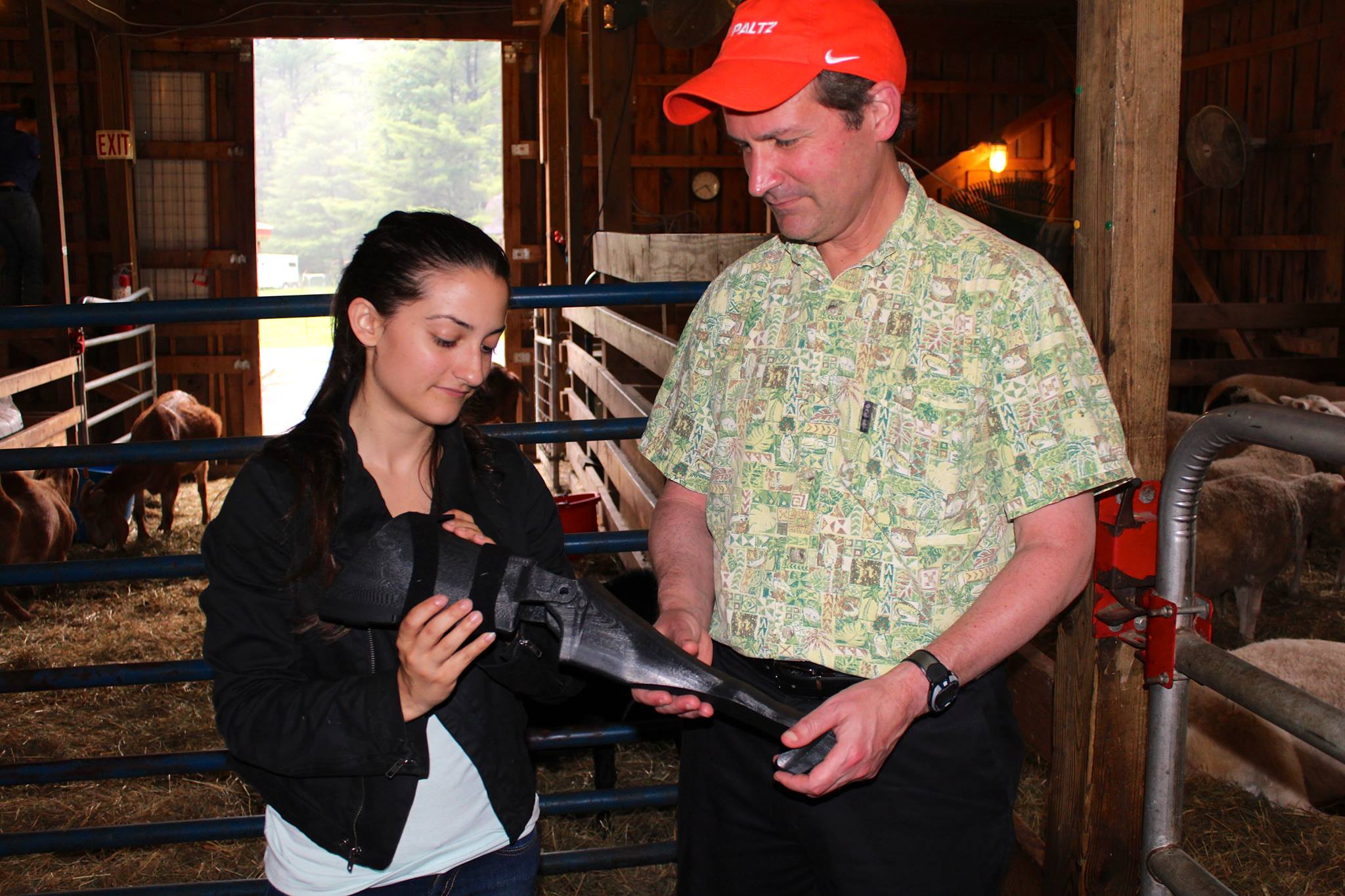3D Printing develops new prosthetic for sheep at Woodstock Farm Animal Sanctuary
A sheep named Felix with a prosthetic limb is getting a helping hand – or, a helping leg – from the Hudson Valley Advanced Manufacturing Center (HVAMC) at SUNY New Paltz.
Felix, a Katahdin sheep – a rare breed which grows hair instead of wool – is a resident of the Woodstock Farm Animal Sanctuary (WFAS), a Woodstock, N.Y.-based nonprofit which rescues and provides shelter for abused and neglected farm animals. When he first arrived at the sanctuary as a baby about six years ago, Felix had been through a recent trauma and was missing one of his legs, says Jenny Brown, the sanctuary’s executive director and founder.
Years later, while taking a tour of the WFAS facilities, HVAMC co-founder and Hudson River Ventures President Sean Eldridge learned that Felix was in need of a new prosthetic leg, as the one he was using was getting worn down.
“I was introducing (Eldridge) to Felix and telling him that he really needed a new leg – you could see he was hobbling on it,” says Brown, who herself wears an artificial leg from a childhood battle with cancer.
Eldridge suggested connecting Felix with the HVAMC for a new 3D-printed prosthetic leg. Brown enlisted the help of her prosthetist, Erik Tompkins, to fashion a leg for Felix. Since Tompkins generally deals with human clients, Brown also sought the expertise of Cornell University veterinarian Andrea Looney.
Katherine Wilson, assistant director of the HVAMC and recent graduate of the metal program at SUNY New Paltz, used a cast scanned by biology major Karen Bylott to build the prosthetic. Felix’s leg was made from AVS plus, an engineering-grade version of the material used to make Legos.
Six weeks into the project, Felix has gone through an initial fitting with the prototype of the prosthetic leg, and Wilson will now revise the leg based on the findings of the fitting, at which time they will return to the sanctuary for another fitting.
Without a properly working leg, the 150-pound Felix could eventually develop curvature in his spine and atrophied muscles. But now, “He’ll get to live his full life out here,” says Brown.
“We’re all about making sure these lucky animals have the best lives imaginable,” says Brown. “A great relationship is budding in the world of 3D prosthetics.”

